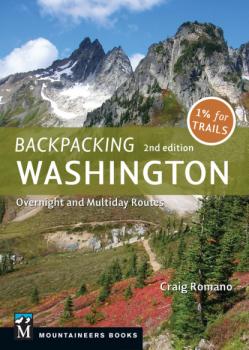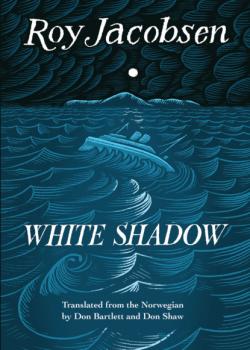Ingram
Все книги издательства IngramUrban Trails: Sacramento
The city of Sacramento and the surrounding urban area has a rich history as the state’s capitol. With a half million residents and a diverse, professional workforce, Sacramento is a dynamic and growing urban area–one whose walkers, runners, and hikers will welcome a guide to the best paths, parks, and trails! Metropolitan area includes Davis, Folsom, Roseville, Auburn, Elk Grove and more. Features include: <ul> <li>35 trails in city and nearby towns, hills, valleys</li> <li>At-a-glance chart for easy trail selection</li> <li>Detailed route descriptions, including distance, elevation, difficulty, trail amenities</li> <li>Family- and dog-friendly options</li> <li>Sidebars highlighting area history</li> <li>Full-color photos and maps</li> </ul>
Mountain Bike: Park City
Park City, Utah, is the world’s first International Mountain Biking Association (IMBA) gold-level ride center. Already famous for its ski resort, the city features over 400 miles of singletrack. Its mountain-bike friendly infrastructure includes two lift-serviced, downhill mountain bike parks (Deer Valley and Park City Resort); a free, bike-friendly shuttle system; and numerous outdoor shops that rent and sell gear. But it’s the singletrack network around Park City that is the real attraction–epic ascents and descents, long traverses, technical sections, man-made features, steep climbs, gentle grades, flowing downhills, and stunning views. There’s a ride here for every ability! Each route includes: <ul> <li>Trail type, distance, elevation gain/loss, high point</li> <li>Estimated ride time, technical difficulty, aerobic intensity</li> <li>Route overview, detailed mileage log, options to shorten or extend when available</li> <li>Photo, map, trailhead GPS coordinates</li> </ul> It’s the perfect time for a detailed guidebook to Park City trails for mountain biking locals and tourists alike.
Backpacking Washington
Veteran guidebook author Craig Romano hits the trail again to uncover amazing backpacking opportunities all over Washington’s wilderness. This second edition of <i>Backpacking Washington</i> details 80 routes, from the lush Hoh River Valley to breathtaking vistas in the North Cascades to the open ridges of the Columbia Highlands and beyond. With an emphasis on weekend trips, routes range from overnights to weeklong treks with suggested campsites and often include options for extending your trip. Features include: <ul> <li>Detailed route descriptions with up-to-date maps</li> <li>All-new photographs</li> <li>Mileage logs featuring campgrounds, water, and other highlights</li> <li>Icons for family- and dog-friendly trips</li> <li>Recommended nearby day hikes</li> <li>Information about the Pacific Crest, Pacific Northwest, and Wonderland Trails</li> </ul> <i>**Mountaineers Books designates 1 percent of the sales of select guidebooks toward volunteer trail maintenance. Since launching this program, we’ve contributed more than $14,000 toward improving trails.<br><br> For this book, our 1 percent of sales is going to <b><a href="http://www.wta.org/">Washington Trails Association (WTA)</a></b>. WTA hosts more than 750 work parties throughout Washington’s Cascades and Olympics each year, with volunteers clearing downed logs after spring snowmelt, cutting away brush, retreading worn stretches of trail, and building bridges and turnpikes. Their efforts are essential to the land managers who maintain thousands of acres on shoestring budgets. </i>
Washington Wildflower Hikes
From flower-filled alpine meadows to streams lined with delicate Scouler’s corydalis blooms, and from lakes covered in water lilies to Dr. Seussian drifts of bear grass, Washington offers something for every hiker–and flower lover. Brothers Nathan and Jeremy Barnes lead hikers on 50 trails to seasonal floral displays, ranging across varied landscapes. Features include: <ul> <li>Basics of wildflower identification</li> <li>Tips for photographing wildflowers</li> <li>“Hike Finder,” which includes flowering season, trail difficulty, distance, and more</li> <li>50 detailed wildflower profiles, including common and botanical names, description, botanical background</li> <li>Stunning images throughout</li> </ul> Along with its showcased species, each handpicked route includes a detailed topo map, turn-by-turn route description, history of the area, and list of other wildflowers found along the trail.
Quilt Block Genius, Expanded Second Edition
· An expanded and revised edition to the best-seller Block Genius · Contains new smaller blocks for mini quilts, new quilt settings, new sampler quilt patterns, and a new “create your own block” technique · Features 300 pieced quilt blocks and variations to grand total of 1001 blocks · Includes user and math-friendly charts · Author, sewist, photographer, and editor Sue Voegtlin wrote, sewed, photographed, and “did the math” for you to enjoy all the possibilities
The Debt
In the tradition of Williams’ <em>Paterson</em>, <em>The Debt</em> explores tensions between tradition and innovation, present and past, in St. John’s, Newfoundland. An argument for community in an increasingly isolated age, <em>The Debt</em> takes stock of all the dues we owe: to nature, to our ancestors, to one another and ourselves.
On Property
From plantation rebellion to prison labour's super-exploitation, Walcott examines the relationship between policing and property. That a man can lose his life for passing a fake $20 bill when we know our economies are flush with fake money says something damning about the way we’ve organized society. Yet the intensity of the calls to abolish the police after George Floyd’s death surprised almost everyone. What, exactly, does abolition mean? How did we get here? And what does property have to do with it? In On Property, Rinaldo Walcott explores the long shadow cast by slavery’s afterlife and shows how present-day abolitionists continue the work of their forebears in service of an imaginative, creative philosophy that ensures freedom and equality for all. Thoughtful, wide-ranging, compassionate, and profound, On Property makes an urgent plea for a new ethics of care.
White Shadow
The highly anticipated sequel to International Booker and Dublin Impac Award-shortlisted The Unseen No-one can be alone on an island . . . But Ingrid is alone on Barrøy, the island that bears her name, and the war of her childhood has been replaced by a new, more terrible present: the Nazi occupation of Norway. When the bodies from a bombed vessel carrying Russian prisoners of war begin to wash up on the shore, Ingrid can’t know that one will not only be alive, but could be the answer to a lifetime of loneliness—nor can she imagine what suffering she will endure in hiding her lover from the German authorities, or the journey she will face, after being wrenched from her island as consequence for protecting him, to return home. Or especially that, surrounded by the horrors of battle, among refugees fleeing famine and scorched earth, she will receive a gift, the value of which is beyond measure. The highly anticipated follow-up to Roy Jacobsen’s International Booker and Dublin Impac Award-shortlisted The Unseen , a New York Times New and Noteworthy book, White Shadow is a vividly observed exploration of conflict, love, and human endurance.
Murder on the Inside
“You have taken our civil rights—we want our human rights.” On April 14, 1971, a handful of prisoners attacked the guards at Kingston Penitentiary and seized control, making headlines around the world. For four intense days, the prisoners held the guards hostage while their leaders negotiated with a citizens’ committee of journalists and lawyers, drawing attention to the dehumanizing realities of their incarceration, including overcrowding, harsh punishment and extreme isolation. But when another group of convicts turned their pent-up rage towards some of the weakest prisoners, tensions inside the old stone walls erupted, with tragic consequences. As heavily armed soldiers prepared to regain control of the prison through a full military assault, the inmates were finally forced to surrender. Murder on the Inside tells the harrowing story of a prison in crisis against the backdrop of a pivotal moment in the history of human rights. Occurring just months before the uprising at Attica Prison, the Kingston riot has remained largely undocumented, and few have known the details—yet the tense drama chronicled here is more relevant today than ever. A gripping account of the standoff and the efforts for justice and reform it inspired, Murder on the Inside is essential reading for our times. Includes 24 pages of photographs.
Tranquility Lost
In 1983, the BC provincial government announced plans to close Tranquille, a large residential institution for persons with intellectual disabilities located outside Kamloops. The announcement was made with no community placement plans for residents. The nearly six hundred employees of Tranquille, members of the BC Government Employees Union and the Union of Psychiatric Nurses, were alarmed by the lack of any Ministry of Human Resources planning for the future of the residents and the ministry’s stated intention to use newly tabled legislation to terminate Tranquille employees without cause and avoid any other collective agreement obligations to employees. Consequently, BCGEU members decided to sit-in and occupy the institution by expelling management, running the institution themselves and publicly advocating for quality community care for people with intellectual disabilities. They did so for nearly a month. Tranquility Lost chronicles the political and public policy conditions leading up to the occupation, the day-to-day activities of the occupation itself, the challenges faced by the workers and negotiations leading to an agreement. Steeves’s account profiles the courage of Tranquille employees and their unprecedented use of collective bargaining as a tool to address conditions faced by government clients as well as government employees themselves.









